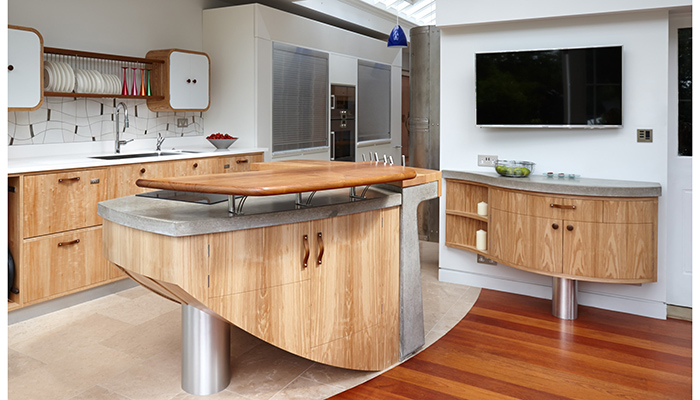Hettich's Colin Patterson on the flexible approach to multigen design

Hettich's Colin Patterson on the flexible approach to multigen design
Colin Patterson, marketing manager at Hettich UK, considers Johnny Grey’s take on multigenerational kitchens from Hettich Xperiencedays, and explains why he believes that the future of design is less about creating kitchens for the elderly, and more about functionality and flexibility for all.
"You would expect Johnny Grey to name the kitchen as the most important room in the home. The renowned designer has been creating convention-defying kitchens throughout a long career. It’s hard to argue against, however. In his presentation to Hettich Xperiencedays on multigenerational design, he gives persuasive evidence that lifestyle choices and global trends are funnelling us all towards the kitchen.
"The pandemic accelerated the trend. It meant, to borrow from the title of Grey’s talk, that we have had to plan for 'Everything All the Time'. This, he says, is the Holy Grail of kitchen design: multigenerational kitchen living.
"It’s not to be confused with 'accessible design' either. Accessible design is part of it, of course, but the temptation when we see the term 'multigenerational' is to focus solely on those in the autumn of life and assume that it’s all about designing for limited movement and other symptoms of old age.
"Apart from the fact that nobody has ever been tempted to buy an 'old person’s kitchen' no matter what their age, multigenerational is about making provision for the different needs of all kitchen visitors, from toddlers to their great grandmas, from boomerang children to parents looking for a helping hand with childcare. It’s playtime, homework, homeworking, cooking, eating, catching up on social media and socialising."
Interpreting behaviour – it’s a skill
"For all those activities to take place in the same space requires us to 'improve the skill with which we interpret behaviour,' says Grey. It means maximising, where possible, the space allocated to the kitchen within the home’s living space, and then making it possible for two, three or more people to carry on with different activities at the same time without making each other feel claustrophobic.
"So what does this mean when it comes to design?
"Start with the main tasks and draw them to the middle of the room. Allow eye contact between the cook and the teenager on a laptop doing their maths while tea is prepared. Think about surface heights. Vary them or build in adjustability to accommodate suitable levels for food prep, working, eating and social gathering.
"Where space allows, Grey favours islands that are long and thin, or in smaller spaces, a circular peninsular with variable height surfaces. Both formats, Grey argues, encourage interaction and multiple activities.
"He also talks about 'affordance' – in other words, designing and placing objects in a way that makes it obvious what they are for, to all users. A hot water tap centrally positioned near the tea bags and mug storage is an obvious example, which also encourages interaction, or making a brew, which essentially comes to the same thing."
Prevent sprawl
"On the subject of storage, it is important to help people organise themselves with defined areas for certain things. Clearly at Hettich we would advise drawer management: prevent sprawl so there’s room for sociability. But Grey is not suggesting everything is hidden from view. Open shelves are fine, even storage on surfaces, as long as related items are placed close to each other, that it all 'works' for the users, and takes into account the ergonomic needs of all ages and abilities.
"Grey’s work ties in closely with the megatrend interpretation in Hettich Xperiencedays, one aspect of which is the flexible use of spaces, from moveable furniture to moveable walls. Multigenerational living is likely to require making better use of space by more people, so flexibility is the key. It requires an open mind and out-of-the-box thinking.
"The '4G' kitchen as Grey calls it, represents a huge opportunity to evolve kitchen design. Above all it’s a living space, with all that this implies. 'More pub and less operating theatre,' concludes Grey. That certainly works for me."

Tags: insight, features, hettich, colin patterson, johnny grey, multigen, multigenerational, kitchens
Sign up to our newsletter
Crown Imperial – 5 ‘must have’ kitchen trends for 2026
Sun 21st Dec 2025


























